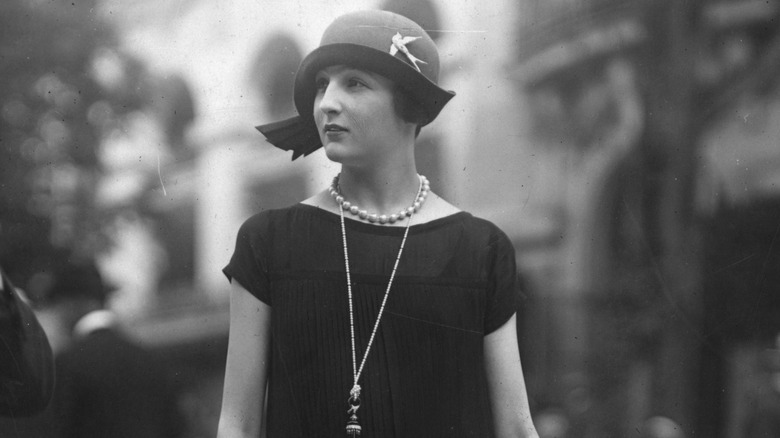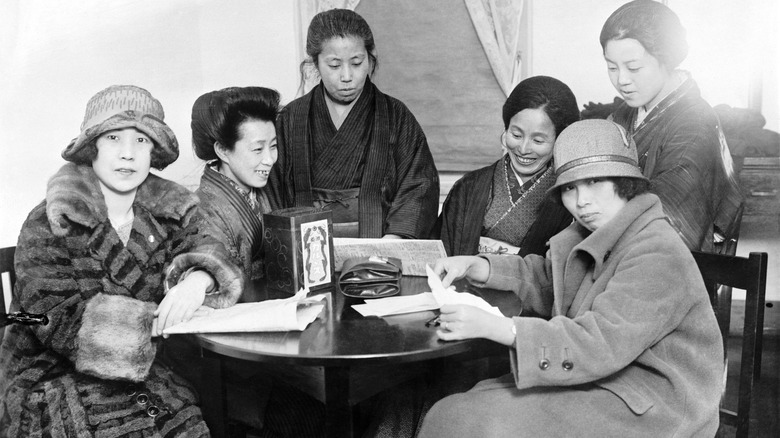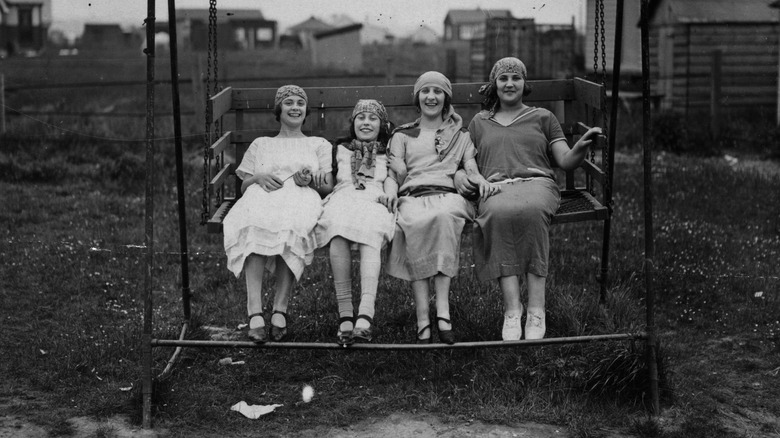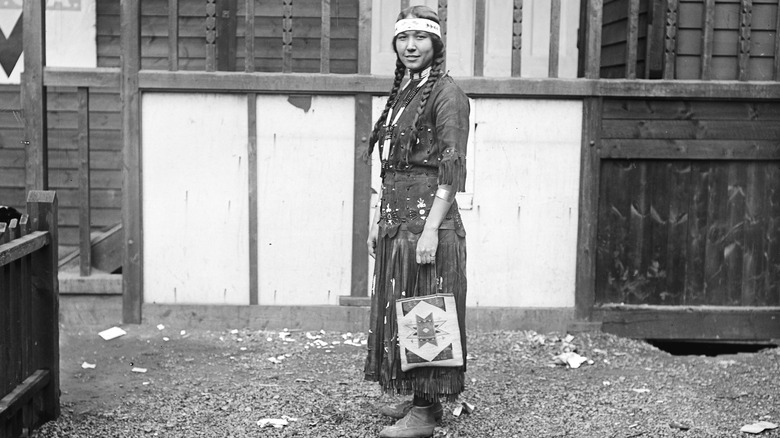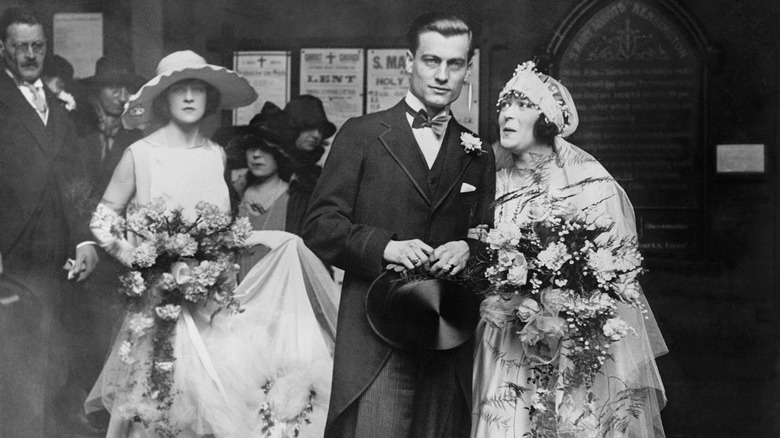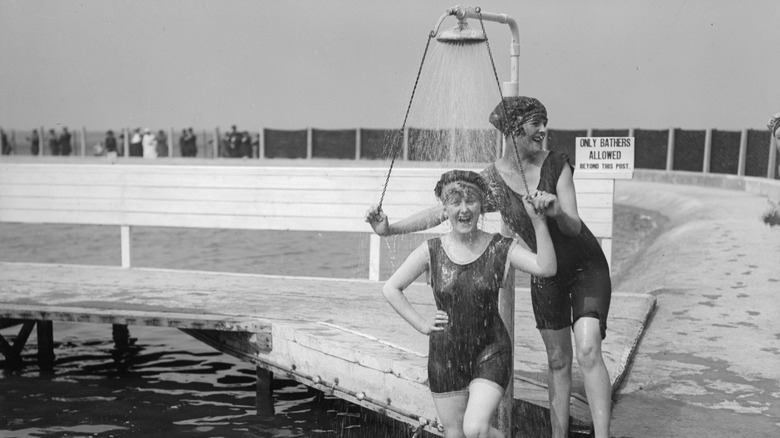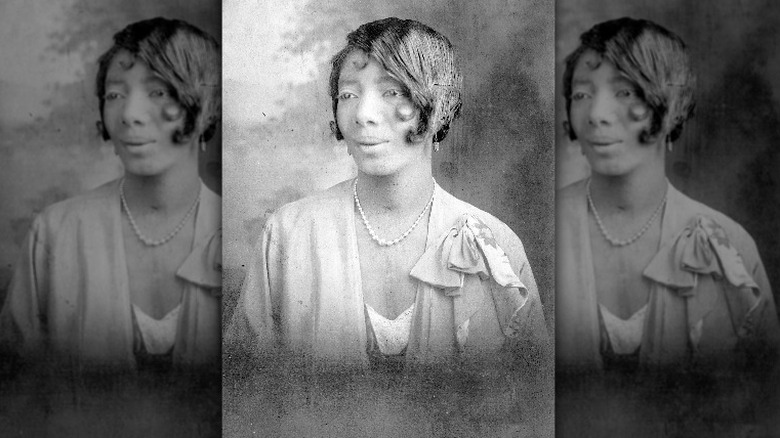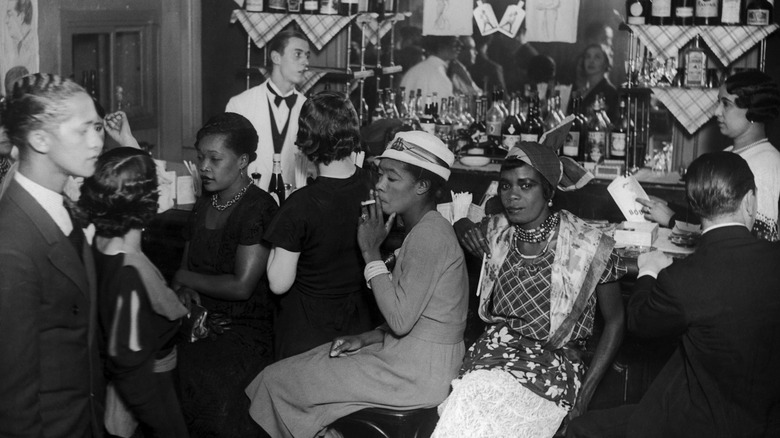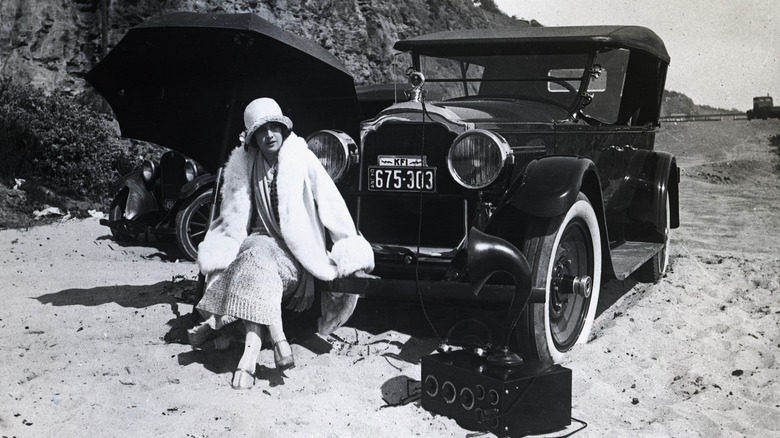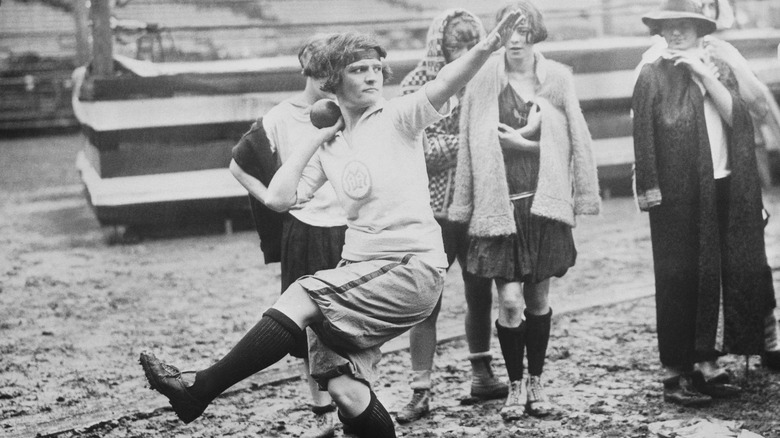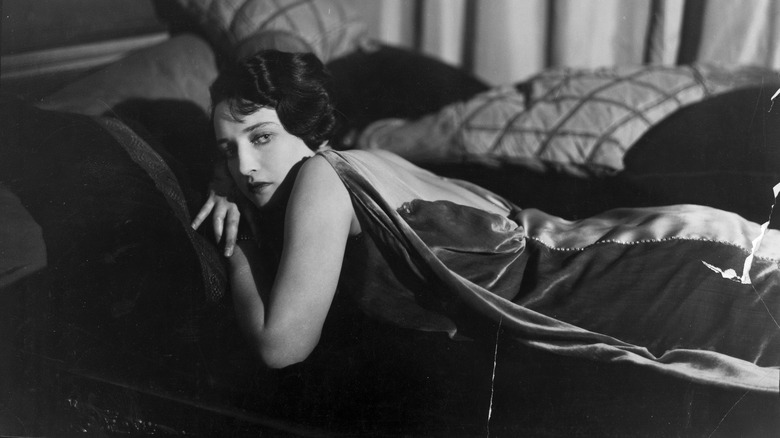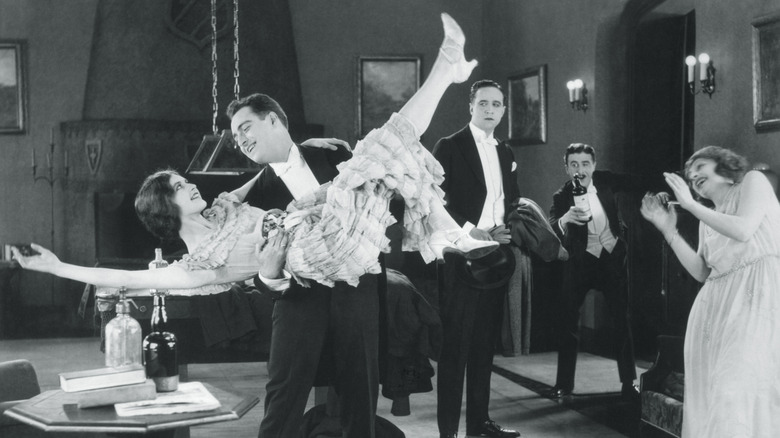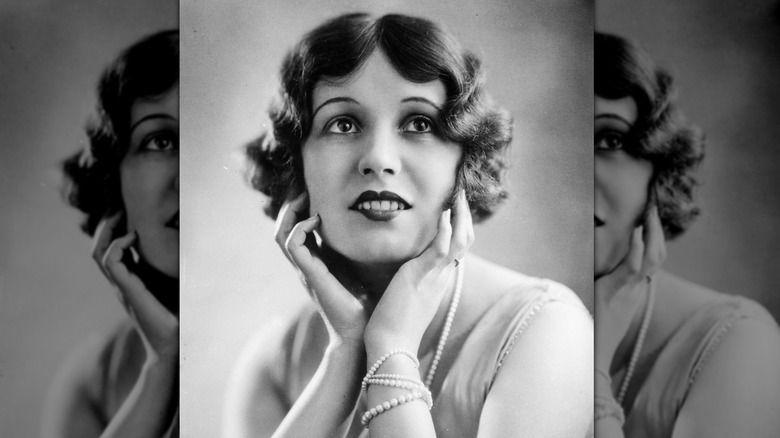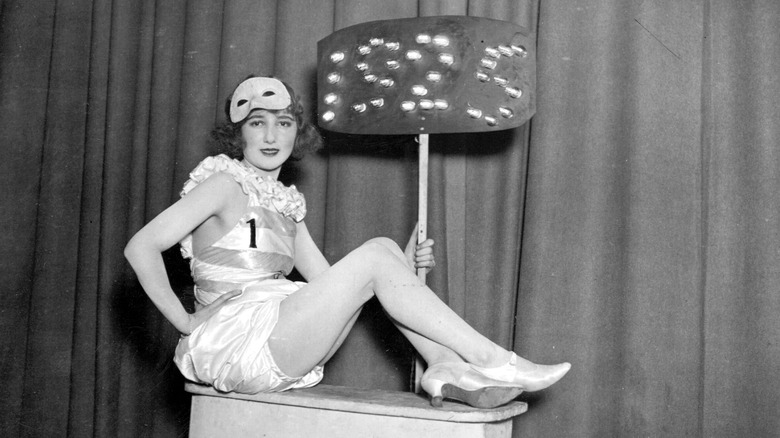Surprising Things Men Found Attractive 100 Years Ago
This article reports on the racist beauty standards of the early 20th century.
A lot can change in a century. Just 100 years ago, cars were still a new invention. Women in the United States had recently been granted the right to vote. Jim Crow laws, which segregated people by race, were still in effect. In many ways, it was a much simpler time, free of the trappings of modern technology, but it was also an oppressive time for anyone who wasn't a White male.
Beauty standards were also quite different. If a man from a century ago saw a modern woman in 21st-century clothing, there's a good chance he'd find her completely unappealing. Many of the things men found attractive in the early 20th century were not simply different from what they find attractive today, but also rather shocking. Quite a few of the characteristics that made up the "ideal" women are considerably sexist, and even racist, by modern standards. Looking back at some of the most surprising things men found attractive 100 years ago isn't just eye-opening, but also a reminder of how far women have come.
Well-dressed suffragists
One of the biggest battles women fought in the early 20th century was for the right to vote. In the first few years of the 1920s, the movement was particularly strong in places like the U.S., the U.K., Canada, Slovakia, Czech Republic, Armenia, Azerbaijan, Kazakhstan, Ireland, and Japan. Women who marched for women's rights were initially considered to be unladylike and militant, but began to use their femininity to win men over to their cause. These stylish suffragists garnered sympathy with men by upending the trope that women who wanted to vote were "frumps." Just a few years earlier, being politically active might damage a woman's marriage prospects, but by re-packaging the suffragist as a respectable, fashionable, middle-class woman, suffragists around the world began to be seen as attractive and clever rather than unrefined.
Suffragist Sylvia Pankhurst once said, "Many suffragists spend more money on clothes than they can comfortably afford, rather than run the risk of being considered outré, and doing harm to the cause" (via The Guardian). The U.S. Congress finally passed an amendment allowing women to vote in 1919, and it was ratified in 1920. In the U.K., women had to wait a bit longer for universal voting rights, which were finally granted with the Equal Franchise Act of 1928.
College-educated women who didn't use their degrees
According to the book "The Paradox of Change: American Women in the 20th Century," by the 1920s, almost half of all college graduates in the United States were women. In spite of changing attitudes about women and education, women still faced discrimination in academia, and many of the nation's top universities only admitted men. Women seeking higher education mostly attended women-only institutions.
While many men liked the idea of a woman who had a college education, most of them didn't want their future wives to actually put those educations to good use. Most people a century ago still believed that a woman's primary place was in the home, and men were looking for wives and mothers rather than career women.
Working before marriage was one thing, but the vast majority of women did not have life-long careers. They were expected to stop working after marriage or, at the very latest, once they had children. Women who were forced to work outside of the home due to economic hardship were pitied for being separated from their families.
Women who were capable of working
While most men wanted women to stay at home with their families, the advent of World War I in 1914 until 1918 meant many women had to work outside of the home. This was justified because it was considered necessary to support men. During the war, many "canteens," were set up to serve as recreation centers for men stationed abroad. "Although the plan was not uncontested, the military's unprecedented decision to allow women to staff canteens abroad reflected a belief that such service was crucial to their men's welfare," wrote Lynn Dumenil in "The Second Line of Defense: American Women and World War I." It was a woman's responsibility to take care of men and children, and American women working in canteens were meant to keep men's spirits up by serving as "symbols of home and family."
Other women advanced the war effort by enlisting in the military, where they were primarily in clerical positions, freeing up men for combat. Others joined the war as nurses, or took on traditional "men's" work in fields such as construction and transportation, which were left understaffed after many of the men who worked in them went to war.
By the 1920s, women had branched out into more diverse areas of work, gradually influencing careers paths and allowing them more financial independence. Some of the most common jobs for American women were teachers, typewriters, launderers, and bookkeepers, according to the U.S. Department of Labor.
Being pure on the wedding night, but not ignorant
A century ago, brides were expected to be virgins on their wedding night. Being "pure" for their husbands was one thing, but women were also expected to have enough knowledge to know how to keep their husbands happy. Women were supposed to know just enough about their bodies and about lovemaking to know how everything worked.
"An adolescent girl of fourteen or sixteen should know the general plan of her own sexual structure," wrote Maurice Alpheus Bigelow in the 1916 book "Sex-education; A Series of Lectures Concerning Knowledge of Sex in Its Relation to Human Life." Too much information, however, might render a woman unladylike and therefore unattractive to potential husbands.
In 1918, Walter Matthew Gallichan wrote in "The Psychology of Marriage" that a woman who didn't know enough about sex risked alienating her husband. "The irresponsiveness of the wife may bewilder and pain the ardent bridegroom, and disharmony may result from these early experiences of connubial life," Gallichan wrote.
Women who removed their armpit hair
Shaved armpits are pretty standard today, but a hundred years ago the removal of women's body hair was just coming into vogue in the United States. Before this, body hair on women was not only considered attractive, but even erotic. Nina Edwards wrote in "Dressed for War: Uniform, Civilian Clothing and Trappings 1914-1918" that armpit hair was considered enticing as it made men think of "other more hidden parts."
How did American culture change from celebrating body hair on women to reviling it? Advertising. In 1915, companies began to recognize that women who didn't typically use razors or hair removal products were an untapped market. That same year, Gillette began marketing safety razors to women. It would still be several years before it was considered mandatory for a well-groomed woman to remove her body hair, but by the 1920s, shaved women were already seen as glamorous and fashionable.
Short bob hairstyles
Women these days sport a variety of hairdos, with multiple styles dominating our social scenes. But a century ago, short chops were emerging as the quintessential 1920s hairstyle.
The bob started to slowly come into fashion in 1910 and would soon become the trademark hairstyle of the flapper generation of the '20s, but only the most daring women were chopping off their locks. While some critics of the bob viewed it as boyish and preferred long, flowing hair as the feminine ideal, women like French designer Coco Chanel and silent film actresses Louise Brooks and Clara Bow popularized the hairdo. As a result, many found the bob accentuated the face, and in turn, was considered an attractive look in a woman.
Women who didn't smoke
World War I ended in 1918, and with the end of the war came the beginning of a new era with more freedoms for women. The transition was gradual, however. Smoking among men was quite common, but female smokers were looked down upon by society. "Women who smoked were widely considered to be of low character and loose morals," wrote Ann Malaspina in "False Images, Deadly Promises: Smoking and the Media." In 1904, a New York mother was sentenced to 30 days in jail for smoking in front of her children on the grounds that it corrupted their morals.
By the 1920s, more and more women were smoking but it was still considered to be a somewhat unrefined pastime. Cigarette ads featuring women never depicted them actually smoking. Some Broadway theaters opened women's smoking rooms, but it would still be another decade before female smokers would shake the stigma that had long existed. Traditional men in the early 1920s were still seeking women who didn't light up.
Bleached skin
Pale skin, whether natural or not, was the fashion in the early 20th century. In the 1920s, skin lightening products were marketed to both Black and White women, and companies often employed racist marketing tactics to get women to buy their lightening products. According to a paper by the American Journal of Public Health, a 1920 issue of Vogue advertised the beauty powerhouse Elizabeth Arden's harmful lead bleaching powder aimed at removing tans. Since lighter skin dominated beauty standards — as well as political and social prejudices — women avoided getting a tan if out in the sun, often covering up with a hat and an umbrella.
In stark contrast, the 21st-century tanning industry is booming. Despite the warnings of the dangers of UV exposure, millions of people in the Unites States still use tanning beds while the market for self-tanning products was valued at $877 million in 2022, according to SkyQuest.
Athletic, but not competitive, women
By the 1910s, many women had abandoned the corset because of the health hazards the undergarment posed. Tiny waists were still fashionable, however, leading to a rise in diet and exercise regimes. In the 1920s, women were encouraged to participate in sports, especially gymnastics, as a way to stay fit and slim. During this time, the idea that a woman could be both athletic and feminine was one that challenged traditional gender norms.
In the 19th century, it was believed that women who were too physically active could render themselves infertile, so encouraging women to exercise was itself a sign of progress. Women weren't completely liberated in that regard by the end of the 1920s, though. Men might have wanted women who stayed fit through physical activity, but it would still be a while before female athletes were accepted in the competitive arena. In 1900, just 2.2% of Olympic athletes were women, according to the Olympics official website. By 1928, that number had risen to nearly 10% of the total competitors. This is a huge difference from the modern era where women make up nearly half of Olympic athletes.
The stereotypical Ziegfeld girl
In the early 20th century, the Ziegfeld girl was the epitome of the beautiful American woman. Florenz Ziegfeld Jr., a theater producer, had very strict requirements for the girls he allowed in his musical revues. A Ziegfeld girl was supposed to be an all-American female, wholesome and beautiful both on and off the stage. Her ideal measurements were a 36-inch bust, a 26-inch waist, and 39-inch hips.
While Ziegfeld himself was the child of immigrants, this didn't stop him from joining in the rampant anti-immigrant attitudes of the early 20th century. A Ziegfeld girl was expected to come from American stock. "The ideal American woman was White," wrote Catherine Gourley in "Gibson Girls and Suffragists: Perceptions of Women from 1900 to 1918." "She was a true American, a woman born in the United States to parents who were also born in the United States. In other words, she was not an immigrant. ... There were no women of color on Ziegfeld's stage."
A free spirit
As the 1920s rolled in, life changed drastically for American women — not only had they secured the right to vote, but they'd also become a vital part of the country's workforce. As such, women began to reevaluate their roles in society and push back against the norms of the previous generation. These ideas ultimately gave rise to flappers: a subculture of women who dressed and behaved in shockingly unconventional ways.
Flappers were known for their short hair and skimpy clothes, as well as their penchant for drinking, smoking, and swearing. To the older generation, these women were a walking nightmare — in a 1922 issue of The Literary Digest, one journalist declared: "The modern girl is an extremist. She dresses in the lightest and most flimsy of fabrics. Her dancing is often of the most passionate nature, and I believe the modern dance has done much to break down standards of morals." But while the older folks may have sneered at these rebellious women, young men were completely smitten.
Thanks to the popularization of contraceptive devices in the 1920s, women also felt more empowered to express their sexuality. Men and women began socializing at speakeasies, which helped normalize the concept of casual dating. As a result, some women rejected old notions about chastity and partook in premarital sex. Of course, men were just as eager to explore their sexual urges — thus, many of them were attracted to free-spirited flapper types.
A full face of makeup
In the early 1920s, the United States entered an economic boom. Small manufacturers were gradually replaced by giant factories that mass-produced everything from automobiles to household appliances. Due to the rise of mass production, the cosmetics industry flourished. Makeup became cheaper and more widely available, prompting major changes in beauty standards. Eventually, men turned their gaze away from the subtle, natural-looking makeup that dominated the previous decade. Women catered to this shift by sporting a face full of makeup.
In the 1920s, women went all-out with their beauty routines. A casual makeup look typically consisted of dramatic, kohl-lined eyes, powdery skin, and razor-thin eyebrows. Women used matte lipstick to accentuate the curve of their upper lips, creating the appearance of a luscious, puckery pout. In a 1925 article for the New Republic, journalist Bruce Bliven summed up the appearance of a typical 1920s young woman. "She is, for one thing, a very pretty girl," Bliven wrote (via Smithsonian). "Beauty is the fashion in 1925. She is frankly, heavily made up, not to imitate nature, but for an altogether artificial effect."
During this era, women enjoyed unprecedented social and economic opportunities — however, they were still somewhat bound by unrealistic beauty standards. As the world continued opening up to women, many felt pressured to stand out at work, in society, and even in the dating pool. By wearing lots of makeup, women hoped to be noticed by men and to establish their value in an increasingly superficial world.
Extremely slender bodies
As the Edwardian era gave way to the 1920s, beauty standards saw a major transformation. In the previous decade, men desired an hourglass figure; however, as the roaring 20s took hold, lean bodies were deemed the most attractive. This new take on the so-called "ideal" body was popularized by the flapper movement, which featured narrow figures that were often described as "boyish." As wide hips and large busts fell out of fashion, some women took to binding their breasts in order to appear slimmer. According to professor Sarah Churchwell, many women wore tightly-laced corsets to shrink their waistlines even more. "Of course, women still wore corsets underneath these drop-waist dresses," the expert told History Extra. "They were very difficult to wear well unless a woman had a certain kind of figure or had restricted herself." In other cases, women turned to extreme diets in their quest to achieve a lean body and skinny limbs.
The image of the rail-thin flapper was marketed to the public by way of magazines, films, and fashion catalogs, which touted impossibly thin women as the gold standard for beauty and femininity. Men swooned over this particular body type and women were determined to achieve it. For some women, this trend had serious health implications. According to a report by the University of Wisconsin-Madison, eating disorders peaked during this decade. The study noted (via CNN), "The highest reported prevalence of disordered eating occurred during the 1920s and 1980s, the two periods during which the 'ideal woman' was thinnest in U.S. history."
